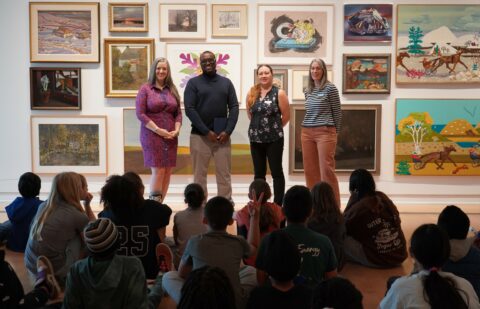This post comes from the desk of Associate Curator and Curator of the Thomas Bouckley Collection, Sonya Jones.
Researching and selecting images for the exhibition Mindful Manipulation was fascinating! Not only did I learn about darkroom manipulation processes but I also discovered some interesting things about early studio practices. For example, hidden mother photography. In the Victorian era, with long exposure times, mothers would often disguise themselves in different ways to hold their children still. Photographers would try to put the focus on the children by camouflaging the mothers as chairs, couches or curtains.
There is one example of this in Mindful Manipulation where the mother is draped to look like a chair. The photographer went even further in drawing attention away from the “chair” with a white vignette. This was done by dodging, a process that decreases the exposure for areas of the print that the photographer wished to be light. As a mom, I know firsthand how difficult it is to capture a squirming baby even with today’s technology, and I guess I’m technically hiding too, but behind the lens versus disguised as a couch! The example of the Morphy baby isn’t as creepy as other examples from this time period. If you Google hidden mother photography the results are hilarious and spooky.
The other subject I found interesting in my research was Tall Tale postcards. These postcards began around the turn of the 20th century, and were especially popular in smaller communities where they would exaggerate food sources specific to the region. In Oshawa’s case, the tall-tale is that Oshawa’s rich soil produces gigantic turnips, and that fish were an abundant food source. Photographers would take two prints, one a background landscape and another a close-up of an object, carefully cut out the second and superimpose it onto the first, and re-shoot the combination to create a final composition that is often ridiculous but fun.
Join me on November 17 for a lecture about the history of manipulated images as well as the emerging field of digital forensics by Deepa Kundur.
For more information please visit https://rmg.on.ca/mindful-manipulation-tbc.php
Top image: “How We Do Things At Oshawa, ONT.”, 1917, Oshawa Community Museum and Archives




